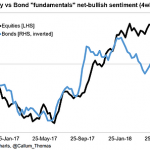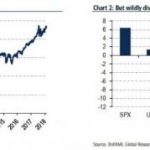Exchange traded volatility products like ETFs and ETNs continue to grow in popularity, and this rapid expansion into a relatively complex asset class has left many investors confused about some of the fundamental concepts needed to reasonably understand the market that underlies these popular retail products.
Equity volatility trading has been around in one form or another since 1973, the year Black and Scholes published their seminal article ‘The pricing of options and corporate liabilities’ and the year the Chicago Board of Trade established the Chicago Board Options Exchange, and listed the first standardized, exchange-traded stock options in the United States (Source: Black, F., & Scholes, M. (1973). The pricing of options and corporate liabilities. Journal of political economy, 81(3), 637-654).
By delta hedging those listed equity options, traders were able to extract the volatility risk component from the option and realize the volatility implied in their prices. Owners of options could profit handsomely through daily stock hedging (delta hedging) of their options during volatile periods, but risked realizing very little on quiet, less volatility days.
While hugely popular in the 1980s, 90s and 2000s, the problem with this type of volatility trading is that stocks (or index futures) need to be constantly traded to realize an option’s implied volatility – selling stock as stock prices rise, and buying it back as stock prices fall. A potentially profitable activity, but ultimately a very time consuming one as well.
Enter the Volatility swap. In the early 1990s banks began offering their customers pure volatility bets – the ability to buy or sell the realized volatility of a stock or index over a fixed period of say six months or one year. In 1999 Derman et al. published the first widely accepted rigorous description of these Volatility swaps and also introduced many to the concept of a Variance Swap or VarSwap [Source: Demeterfi, K., Derman, E., Kamal, M., & Zou, J. (1999). More than you ever wanted to know about volatility swaps. Goldman Sachs quantitative strategies research notes, 41].













Leave A Comment